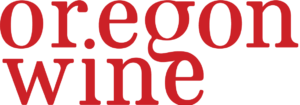Oregon wine has become a signature state product, earning international recognition and fueling the economy. Oregon’s emergence on the world stage as a premium wine producer in a little more than 50 years is truly remarkable. This feat is due in large part to the vision, hard work, and innovation of early industry pioneers and the hundreds of growers and vintners that have followed in their footsteps. From day one, their efforts have been informed by research and information from both public and private research programs including those at Oregon State University. OSU initiated research programs in viticulture and enology in the 1950’s, well before the first modern plantings in Oregon, and has continued to play important roles at key junctures including wine grape clonal evaluation (e.g. Dijon clones), development of lag phase crop estimating system, rootstock and variety trials, response to phylloxera infestation in Oregon vineyards, improvements in trellis systems and canopy management practices, and improvement of yeast, enzyme, and malolactic bacteria. The industry wouldn’t be where it is today if not for this ongoing partnership.
This important, synergistic relationship between the Oregon wine industry and OSU’s research, outreach, and education programs was recognized and formalized in 2008 with the establishment of the Oregon Wine Research Institute (OWRI). From inception, OWRI has been a three-way partnership between the Oregon wine industry, OSU and the Oregon legislature. Original investments included $2 million in industry donations, dedication of more than $500,000 per year of existing OSU recurring funding (four existing faculty positions and related support), and $500,000 per year of new recurring funding appropriated by the Oregon Legislature in the 2007 biennium. Over the last two biennia (2013 and 2015), the Oregon legislature appropriated a total of $1.25 million dollars per year (half in each biennium) of recurring funding for fermentation science programs at OSU. Roughly $500,000 of this recurring support was for wine research, education and outreach, bringing the total recurring funding for OWRI to approximately $1.5 million per year. These base funds are enhanced by research grants and contracts, most notably the $325,000 per year of competitive funding provided by the Oregon wine industry.
The OWRI’s contemporary mission is to help underwrite Oregon’s growing position in the world market as a producer of premium wines with a commitment to continuous improvement in grape production and wine quality. OWRI research and outreach programs support the industry in three key ways. First, research and outreach focused on process improvement – doing what we do better. Examples include studies on vine balance, crop load, irrigation and nutrition management, disease and pest management, sulfur management in wines, management of primary and secondary fermentations and enhancing wine aroma and flavor. Second, research and outreach focused on responding to unanticipated situations (and better yet anticipating them in advance). Examples include diseases and invasive pests (e.g. red blotch, brown marmorated stink bugs) and typhoon rain events during harvest. Third, research and outreach focused on helping drive innovation to anticipate and adapt to longer term, major changes in the natural and business environments. Examples include adapting production methods and varieties to warmer temperatures and greater variation in precipitation, application of precision agriculture techniques, responding to changing labor markets, applying molecular techniques to grapevine improvement and responding to emerging industry competition and market opportunities.
We greatly appreciate the Legislature’s and the industry’s increased support for OWRI and the additional capacity it provides to partner with the industry on research to enhance grape and wine production methods, solve industry problems, adapt to changing environmental conditions and help drive innovation. We are committed to being accountable for these funds and to working with the industry to maximize their impact. The President’s Council of Advisers on Science and Technology released a report in 2012 documenting a $10 return for each $1 dollar of public funding nationally for agricultural research. In the report, they note that individual research projects often take years to complete, that the benefits of specific research projects often accrue years after the research is completed, and that the benefits often accrue in regions far from where the specific research projects are conducted. These so-called lag and spill-over effects complicate efforts to calculate formal rates of return, particularly for relatively short timelines (e.g. 20 years or less) and smaller geographic scales (e.g. individual states). Despite these methodological challenges, we are committed to the concept of maximizing the rate of return on these investments and being accountable for the impact of our work. As a step in this direction, OWRI and OWB will collaborate to provide regular research project progress reports documenting research outcomes and anticipated benefits to the industry.
Thank you for again for your continuing support and collaboration as we look ahead to the next 50 years for this dynamic industry.

Leave a comment